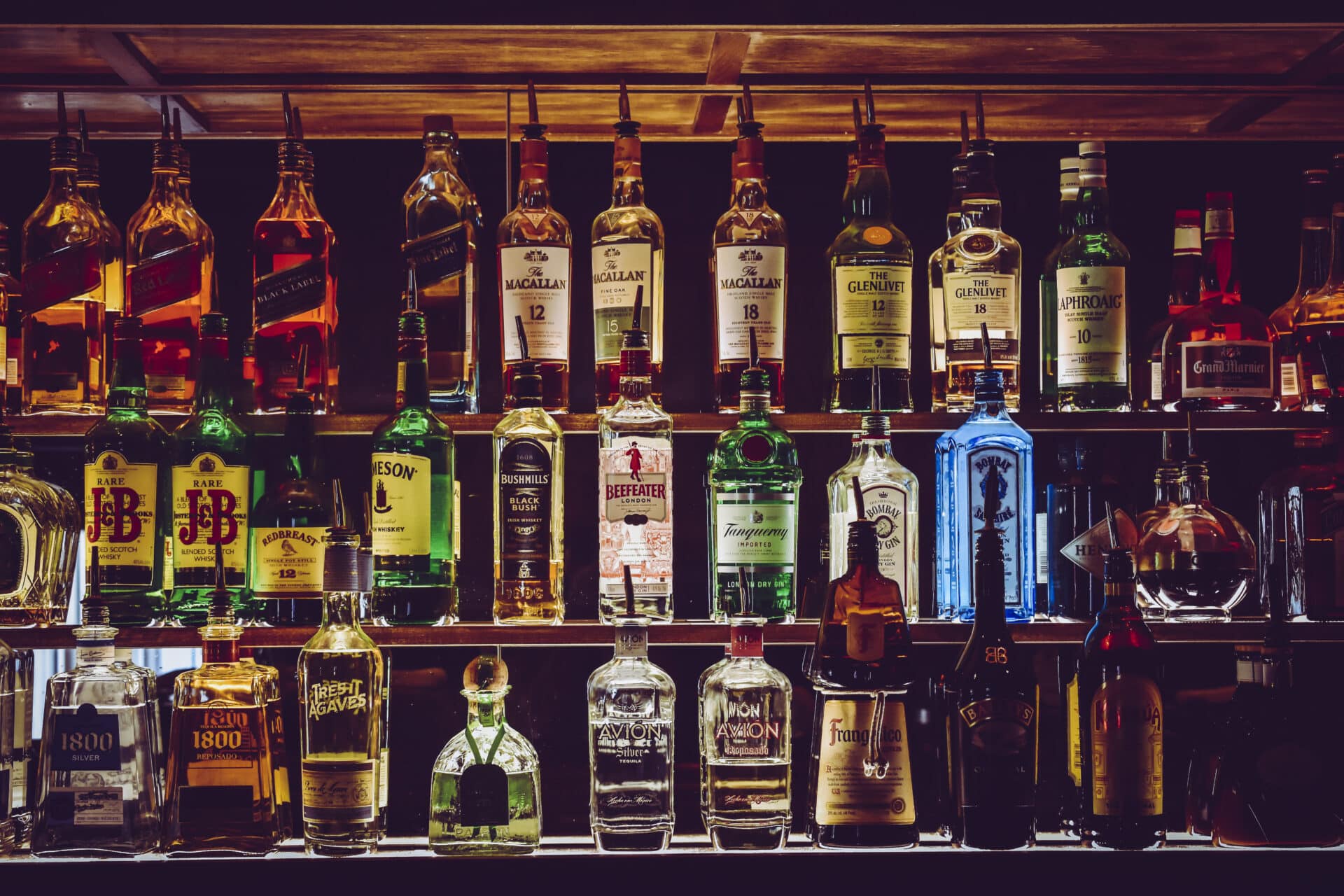Vodka is a popular spirit that is made by distilling fermented grains, fruits, or vegetables. It is typically made with rye, wheat, potatoes, or corn and has an alcohol content of 40% or higher. Distillation is the process of purifying and concentrating a liquid through evaporation and condensation. In the case of vodka, it involves multiple distillation steps to create a smooth and clean-tasting product. This article will discuss how vodka is distilled and some of the differences between types of vodka.Vodka is an alcoholic beverage made mostly from water and ethanol, with traces of impurities and flavorings. It is typically made by distilling the liquid from cereal grains, potatoes, or sometimes fruits or sugar. Distillation involves heating the liquid until it vaporizes and then cooling it so that it condenses back into a liquid. This process is done multiple times to remove impurities and increase the alcohol content. After this process, vodka is usually filtered several times before being bottled or packaged. The end product is usually clear and has a mild flavor and a relatively high alcohol content (usually between 35%-50% ABV).
The Ingredients of Vodka
Vodka is typically made from fermented grains or potatoes. The most common type of vodka is made from grains such as wheat, rye, barley and oats, but it can also be made from things like potatoes, grapes, molasses and corn. For each type of vodka, the ingredients used to make it vary according to the recipe used by the distiller.
When making vodka from grains, the grains are first milled into a powder which is then mixed with water and yeast to form a mash. The mash is then fermented in large tanks for several days before being distilled in a still. During the distillation process, the alcohol is separated from the other components of the mash and collected in a container.
Once this process is complete, vodka producers will often add flavorings such as herbs or fruits to their vodka to give it its distinctive taste. Some vodkas are filtered through charcoal or other materials to make them smoother and more palatable. Finally, some producers may choose to add sugar or glycerol to sweeten their vodka and give it a smoother finish.
No matter what ingredients are used in its production, all vodkas must meet certain standards set by regulatory bodies in order for it to be labeled as such. This means that all vodkas must have an alcohol content of at least 37.5% by volume in order for them to legally be called vodka.
Thus the ingredients used in making vodka can vary greatly depending on where it’s produced and what recipe is being used for production. However, no matter what goes into making each particular type of vodka, all vodkas must have an alcohol content of at least 37% by volume in order for them to legally be labeled as such.
Using Pot Stills for Vodka Distillation
Vodka distillation is the process of producing a high-proof, clear, and flavorless spirit. To distill vodka, pot stills are often used. Pot stills have been used for millennia to produce distilled spirits, and in modern times, they have been adapted to create an array of flavored vodkas. The process of producing vodka with a pot still begins with the fermentation of grain or potatoes. After fermentation is complete, the mash is heated to boiling, which vaporizes the alcohol and other volatile compounds from the liquid. The vapor is then directed through a condenser where it is cooled and re-liquefied into a distilled spirit.
The main benefit of using pot stills for vodka distillation is that it gives greater control over the flavor of the end product. By controlling the temperature and time at which the mash is boiled, different flavor compounds can be extracted from the liquid and incorporated into the finished vodka. Additionally, because pot stills are relatively small in scale compared to large-scale column stills typically used in large-scale vodka production, they offer greater flexibility when making flavored vodkas as well as providing an increased level of detail when creating a high-quality product.
Another advantage of using pot stills for vodka distillation is that they are more energy efficient than column stills due to their smaller size and lower heat requirements. This makes them ideal for craft producers who need to keep their energy costs low while producing quality spirits on a small scale. Additionally, because pot stills do not require additional equipment such as rectification columns or fractional distillations like larger systems do, their initial cost can be significantly lower than other types of distillation equipment.
Overall, using pot stills for vodka distillation provides greater control over flavor complexity as well as being more energy efficient than traditional column still systems used in large-scale production. Craft producers who need to keep their costs low while creating quality spirits should consider using this type of system for their vodka production needs.
Using Column Stills for Vodka Distillation
Vodka is a popular alcoholic beverage that is made by distilling fermented grain or potatoes. The process of distilling vodka involves using a still to separate the various components of the liquid, such as alcohol and water. Column stills are one type of still used in vodka distillation, and they are often preferred over traditional pot stills because they produce a higher-quality product. When using column stills for vodka distillation, the process begins by heating the fermented grain or potatoes to create steam. This steam is then passed through a series of columns, which contain packing material such as copper mesh or steel plates. As the steam passes through these columns, it separates into different components, with alcohol vapor collecting at the top and heavier compounds such as water collecting at the bottom. The alcohol vapor is then condensed back into liquid form and collected from the top of the still. This process can be repeated several times to ensure that only pure alcohol is collected from the top of the still. The final product is then filtered and bottled for consumption.
The primary advantage of using column stills for vodka distillation is that they allow for a higher degree of control over the process. For example, column stills can be adjusted to remove certain compounds while retaining others, allowing producers to fine-tune their products to get exactly what they want out of their vodka. Additionally, column stills allow producers to increase efficiency by allowing them to process larger batches in less time than traditional pot stills. This makes them ideal for large-scale production facilities where time and consistency are important factors.
Overall, column stills are an excellent choice for producing high-quality vodka on a large scale. By controlling various aspects of the distillation process, producers can create unique products that meet their exact specifications. Additionally, due to their increased efficiency compared to traditional pot stills, column stills can help reduce costs associated with large production runs while ensuring consistent results every time.

Watering Down Vodka After Distillation
Vodka is a popular spirit that is enjoyed around the world. It is made by distilling a fermented wash of grains, such as wheat or rye, and then adding water to reduce the alcohol content. The process of watering down vodka after distillation is known as proofing, and it helps to make the vodka smoother and more palatable.
Proofing vodka begins with determining the desired alcohol-by-volume (ABV) content. This can range from 35 percent to over 80 percent. The ABV is then achieved by adding precise amounts of water to the already distilled spirit. It is important that exact measurements are used, as too much or too little water can affect the taste of the vodka and alter its strength.
Once the desired ABV has been reached, a sample of the proofed vodka must be tasted in order to check for any off-flavors or aromas. If any are detected, adjustments can be made by adding more water or additional flavorings. Once all tastings have been completed and approved, the vodka is ready for bottling and sale.
In some cases, other ingredients may be added after proofing in order to give vodka its signature flavor profile. These may include citrus fruits, herbs, spices, honey, or other natural flavors that provide subtle notes of sweetness or spice. Adding these ingredients after proofing helps to ensure that they are not overly potent and do not overpower the underlying taste of the spirit itself.
Proofing vodka after distillation helps create a smooth spirit with just the right amount of alcohol content for optimal enjoyment. It also allows for additional flavors to be added without overpowering the underlying taste of the spirit itself. When done correctly, proofing results in a delicious vodka that can be enjoyed neat or as part of a delicious cocktail.
Charcoal Filtering Vodka After Distillation
The process of charcoal filtering vodka after distillation is a technique that has been used for centuries. The process involves the use of activated charcoal, which is a porous material that is able to absorb impurities from the vodka. This method of filtration helps to remove undesirable components from the vodka, such as any leftover flavorings or colorings, as well as any compounds that may have been produced during the distillation process. It also helps to give the vodka a smoother finish and a cleaner taste.
The charcoal filtering process starts with the distillation of the vodka, where it is heated and then cooled quickly, allowing for the separation of different components in the liquid. After this has been done, the liquid is transferred to a filter tank, which contains activated charcoal. As the liquid passes through this tank, the charcoal absorbs any undesired components from it and leaves behind only pure alcohol and water molecules.
Once this process is complete, the filtered vodka can be bottled and enjoyed. Charcoal filtering has become a popular choice for many brands of vodka as it helps to give it a smoother texture and better taste than if it was not filtered at all. Additionally, it helps to remove any harsh flavorings or colorings that may have been added during distillation.
Overall, charcoal filtering vodka after distillation can help to improve its quality and flavor profile significantly. As long as you choose a good quality activated charcoal filter material for your filtration system, you should be able to produce an excellent tasting product that everyone will enjoy!
Aging and Flavoring Vodka After Distillation
Vodka is a unique type of spirit, which can be aged, flavored, and distilled without losing its distinctive character. Aging vodka is a process that gives the spirit an additional layer of flavor and complexity. Many vodkas are aged in oak barrels to impart a woody flavor and texture. The aging process also helps to mellow out some of the harshness that comes with distilling the spirit. After aging, some vodkas are flavored with herbs or spices to provide an additional layer of complexity. The flavoring process can be done either before or after bottling but it is important to remember that flavoring will not add any additional alcohol content to the vodka.
Finally, vodka can be distilled in order to further refine the spirit and remove impurities. The distillation process removes any remaining harshness from the vodka while also increasing its alcohol content. The amount of distillation varies depending on the desired flavor profile but generally speaking, more distillation will result in a smoother and more refined vodka. It is important to note that even after distilling, vodka can still vary in taste from brand to brand depending on how it was made and what ingredients were used during production.

Conclusion
Vodka is a clear, neutral-tasting spirit that is created using various grains, such as wheat, rye, or corn. It is produced by going through the distillation process multiple times to purify the liquid and remove any impurities. The final product is a high-proof spirit that can be enjoyed on its own or used to create a variety of cocktails.
Through the distillation process, vodka can be made anywhere in the world, with each region producing its own unique flavors and styles. While vodka has been around for centuries, it still remains an incredibly popular spirit today due to its versatility and flavor profile. Whether you prefer straight vodka or cocktails made with it, there is no doubt that it will continue to be enjoyed for years to come.

